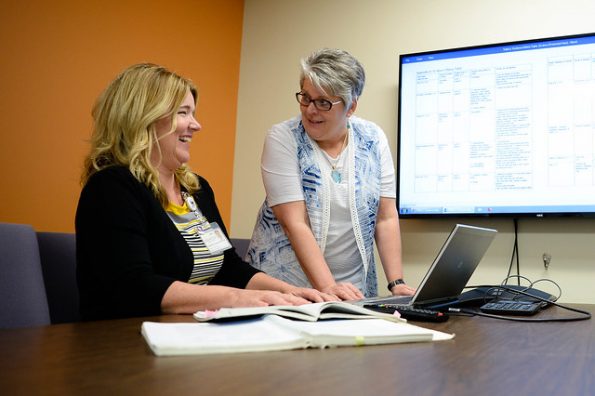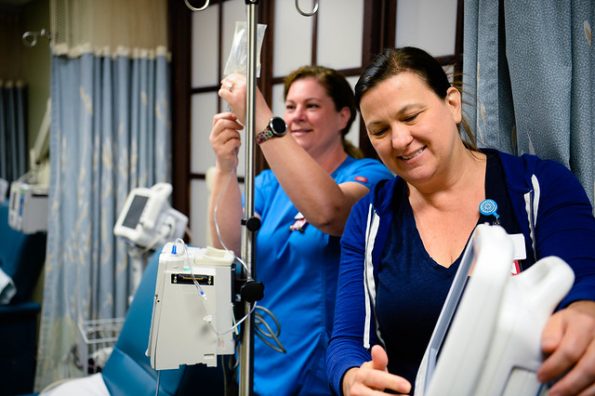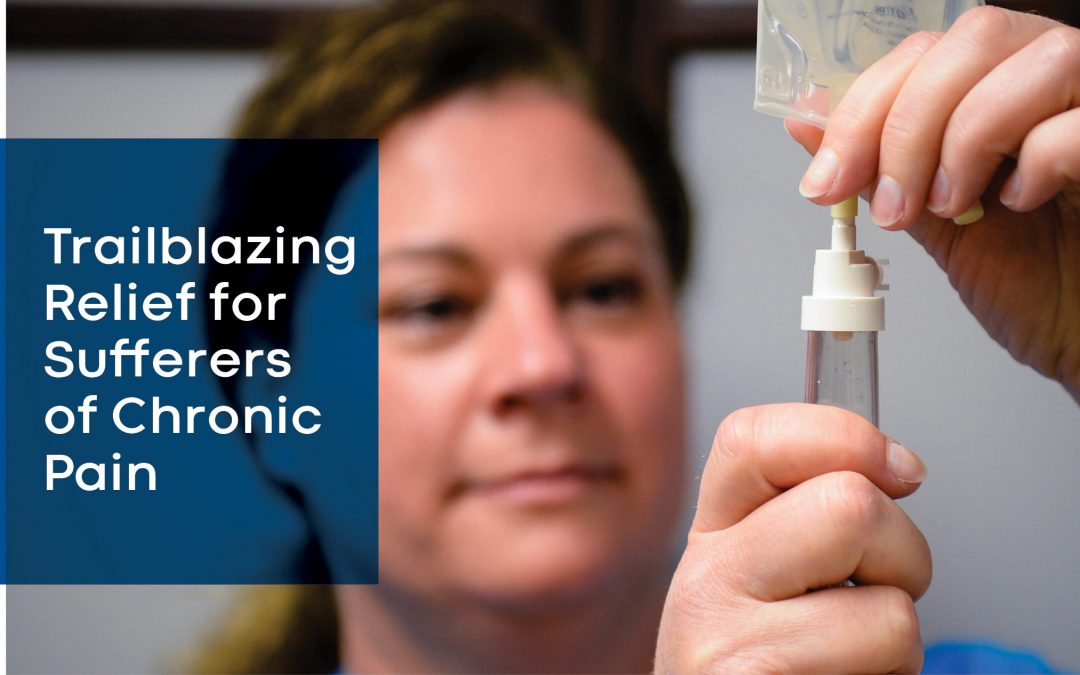Happy tears are a great thing. For those seeking relief for sufferers of chronic pain, tears are the best reward.
R. Shelly Lancaster and Kathy Wren, faculty members in the University of Wisconsin Oshkosh College of Nursing (CON), are helping deliver an innovative way to relieve chronic pain through the infusion of intravenous (IV) lidocaine—a common non-narcotic numbing agent.
The newer therapy is being heralded by members of the nursing and medical community.
“Lidocaine is typically given via IV for one hour in a relaxed setting,” Lancaster said. “When it works, it’s phenomenal.”

Lancaster and Wren
She said chronic pain is defined as pain occurring three months after normal healing should have taken place and affects 1.5 billion people worldwide. About 5%, she added, suffer from neuropathic pain or pain from damage to the nerves in the peripheral and central nervous systems. That type of pain can be difficult to treat as it often is unresponsive to traditional pain management therapies including opioids.
In addition to her work at UWO, Lancaster practices infusion therapy at Aurora Medical Center in Oshkosh, along with Dr. Maurizio Albala, an anesthesiology/ pain management provider, and the Advocate Aurora nurse infusion team of Amy Hudson, Karen Leavitt and Dawn Tischaefer.
Lancaster was asked to write a nursing policy for the department to address care of patients receiving lidocaine. She discovered little was published on the care of patients receiving the medication.
She asked her colleague, Wren, director of the CON’s Doctor of Nursing Practice Nurse Anesthesia Emphasis, to lead a study examining dosing of the infusions.
Wren said she was amazed to learn the amount of medications patients with chronic pain were taking—“20 or more pills a day to manage their pain”—and the number of people taking high doses of narcotics.
The management of pain in that fashion, she said, does not align with a good quality of life.
Lancaster simultaneously led the team through a systematic review of literature addressing nursing care in an effort to develop and define care protocols. The efforts of Wren and Lancaster resulted in two peer-reviewed publications in less than a year in the American Association of Nurse Anesthetists Journal and Pain Management Nursing.
Helping Close to Home
Perhaps the biggest reward for the infusion team at Aurora is knowing they’re helping neighbors in the greater Oshkosh community. Although they have seen a variety of outcomes from lidocaine therapy, more than half of the patients are experiencing some degree of relief.

Tischaefer and Leavitt
Lancaster shared the story of a patient with multiple sclerosis who had been suffering for 15 years from chronic neuropathic pain in her arms and legs. Following the first lidocaine infusion treatment, the pain was gone. Lancaster said the woman cried
“happy tears” for 15 minutes. It was the first time in 15 years she was pain free.
The process began when Albala provided a pain management plan that included lidocaine infusion. Lidocaine is typically used to numb nerve transmission and provide pain relief and anesthesia for invasive procedures and surgeries.
Not all pain specialists prescribe to the newer infusion therapy. But for people who previously couldn’t sleep or go
to work, there can be a tremendous improvement in the quality of life.
Wren said the success rate for lidocaine infusion was quite high, above 80% immediately following infusion. She said it has significantly fewer side effects, improved pain relief and reduced costs compared with life-long opioid therapy.
“Now we are doing a follow-up study to determine how long the pain relief lasts and to try and predict what type of pain syndromes benefit most from the infusions,” Wren said.

